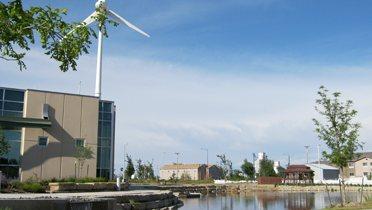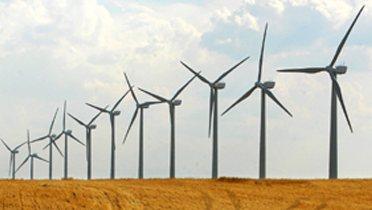For those who’ve been following the “green jobs” story the release late last week of the federal government’s first official green goods and services count was probably a little anticlimactic.
Nearly two years in the making, the one-year “snapshot” of so-called “green jobs” from the Bureau of Labor Statistics found that 3.1 million people, amounting to 2.4 percent of full-time workers, are employed in the production of goods and services that benefit the environment.
Likewise, it found that the bulk of the jobs — 2.3 million of the 3.1 million total — reside in the private sector, with more than 462,000 of the jobs lying in manufacturing.
And it provided information for the states (though not for metropolitan areas). California had the highest number of green jobs, 338,400, representing 2.3 percent of the state’s total employment. Green-tinted Vermont had the highest percentage of environmentally friendly jobs, at 4.4 percent.
In short, there weren’t a lot of surprises in the new tabulation — just a series of reasonable-seeming, not-massive, but not-insignificant numbers that track very well with a number of previous clean economy studies including the big “Sizing the Clean Economy” report released last summer by my group here at the Brookings Institution.
And yet, if there weren’t major surprises, it is in fact that absence of surprise in which resides the real significance of the new report.
For years all kinds of voices have been disputing the concept of “green jobs,” complaining about the difficulty of defining such positions, or simply deriding such jobs as a hoax. And there is no doubt that the “green” or “clean” economy remains hard to assess, with “green” or “clean” jobs related to environmental aims pervasive and tricky to isolate — and count.
And yet, “tricky” and “hard to assess” — we now know for sure — does not mean impossible to measure and forever debatable.
In this respect, it is a big deal that the BLS — drawing on an emerging definitional consensus and utilizing a high-quality survey-based technique — arrived at numbers broadly consistent with not only the Brookings study but several other studies including one from the Department of Commerce.
All of which points to the real breakthrough of the new report. Without a lot of fanfare, the solid Labor Department count demonstrates once and for all something important: that the “green” or “clean” economy exists; that we can define it; that in fact we can count its jobs and measure it and track its progress. Given that, it is soon going to be time for election-year combatants to leave aside both flat-earth denials and exaggerated claims and get down to realistic dialogue about how to foster what turns out to be a modest-sized, manufacturing-oriented, unavoidable piece of America’s next economy.
Look for my team at Brookings to return to the counting game early next year with a new analysis focused especially on the growth rates of dynamic, innovation-oriented “cleantech” segments.





Commentary
“Green Jobs”: Yes, We Can Count Them!
March 26, 2012